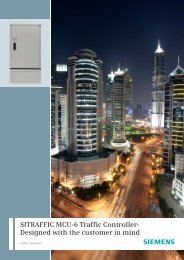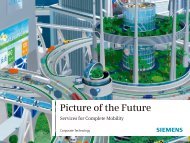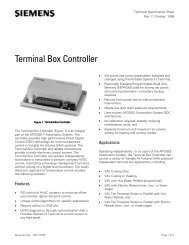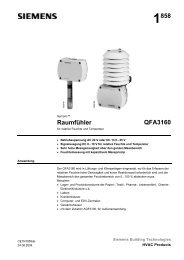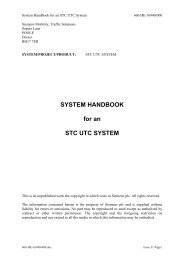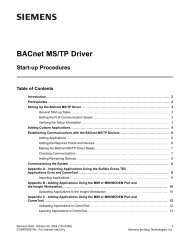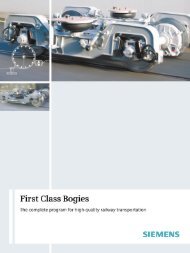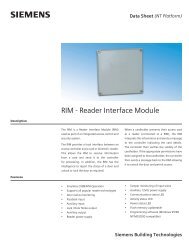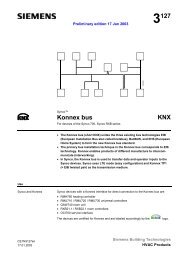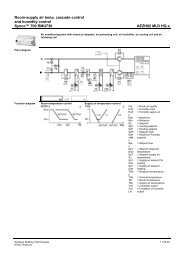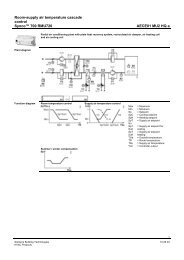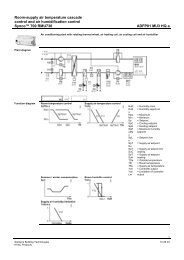A nifty means of transport and mobile electrical storage ... - Siemens
A nifty means of transport and mobile electrical storage ... - Siemens
A nifty means of transport and mobile electrical storage ... - Siemens
Create successful ePaper yourself
Turn your PDF publications into a flip-book with our unique Google optimized e-Paper software.
s<br />
country’s Renewable Energy Federation (BEE). This extra consumption can even be<br />
covered without problems through the growth in renewable energies. For example:<br />
Electricity generated from renewable energies increased from 2007 to 2008 by some<br />
4.3 billion kilowatt-hours – more than twice the total consumption by the electric car<br />
fleet forecast by the government in 2020.<br />
However, there is the further challenge <strong>of</strong> developing workable business models for<br />
the future. After all, selling electricity for electric vehicles just does not pay <strong>of</strong>f given<br />
their energy efficiency <strong>and</strong> current energy prices – especially when you also consider<br />
the enormous investments required to create the necessary infrastructure.<br />
Another focal aspect is currently a power supply system to flank everything. After all,<br />
the system <strong>of</strong> the future – the smart grid – must be intelligent <strong>and</strong> flexible, otherwise it<br />
will not be able to integrate the large volumes <strong>of</strong> fluctuating wind <strong>and</strong> solar electricity<br />
<strong>and</strong> the growing number <strong>of</strong> small, local power generators. Key technologies within<br />
these smart grids will include smart meters <strong>and</strong> virtual power plants to contribute<br />
intelligence to the medium- <strong>and</strong> low-voltage grids. They will meet future requirements<br />
as regards dynamic market activity, forecast mechanisms <strong>and</strong> quick balancing.<br />
The car as a source <strong>of</strong> revenue<br />
In general, it is always helpful to look further afield <strong>and</strong> to think about more than just<br />
the car itself when it comes to the issue <strong>of</strong> electromobility. “Looking to the near future,<br />
we have to take all possible <strong>electrical</strong>ly driven vehicles into account. Such drives<br />
already play important roles in various specialized areas, such as at warehouses or<br />
airports,” says Christian Lechler, Account Line Manager at <strong>Siemens</strong> IT Solutions <strong>and</strong><br />
Services – Industry, Energy, Healthcare. “As far as cars <strong>and</strong> trucks are concerned,<br />
the purely electric drive is not all that important at present – unlike the hybrid-electric<br />
drive.”<br />
“A key factor in our commitment is for our developments <strong>and</strong> <strong>of</strong>fers to keep pace with<br />
how society thinks <strong>and</strong> acts green,” notes Markus Zahnjel, head <strong>of</strong> the Car<br />
Electronics Automotive segment at <strong>Siemens</strong> IT Solutions <strong>and</strong> Services. “We mainly<br />
focus on applications that relate to driving, but also ones above <strong>and</strong> beyond that. One<br />
example is the use <strong>of</strong> vehicles or entire fleets as load sinks, i.e. a sort <strong>of</strong> electricity<br />
store: When there is too much energy in the grid, it can be delivered to the<br />
electro<strong>mobile</strong>s. If the vehicles no longer require it or need a lower quantity at a<br />
specific time, the energy can be fed back into the grid, possibly even at a pr<strong>of</strong>it to the<br />
car owners, for example if there happens to be a shortage <strong>of</strong> electricity. Existing fleets<br />
where uniform conditions predominate are currently suitable for such energy<br />
brokering models. However, commuters with their set routes <strong>and</strong> times at which they<br />
travel, as well as second cars, which are normally not used for long trips, are potential<br />
targets.”<br />
The basis for such models is networking <strong>of</strong> the vehicles with the infrastructure – for<br />
instance the smart grid, which can also be used as a tool for communication. Thanks<br />
to them, the e-cars are informed <strong>of</strong> the current electricity price by the network<br />
2




